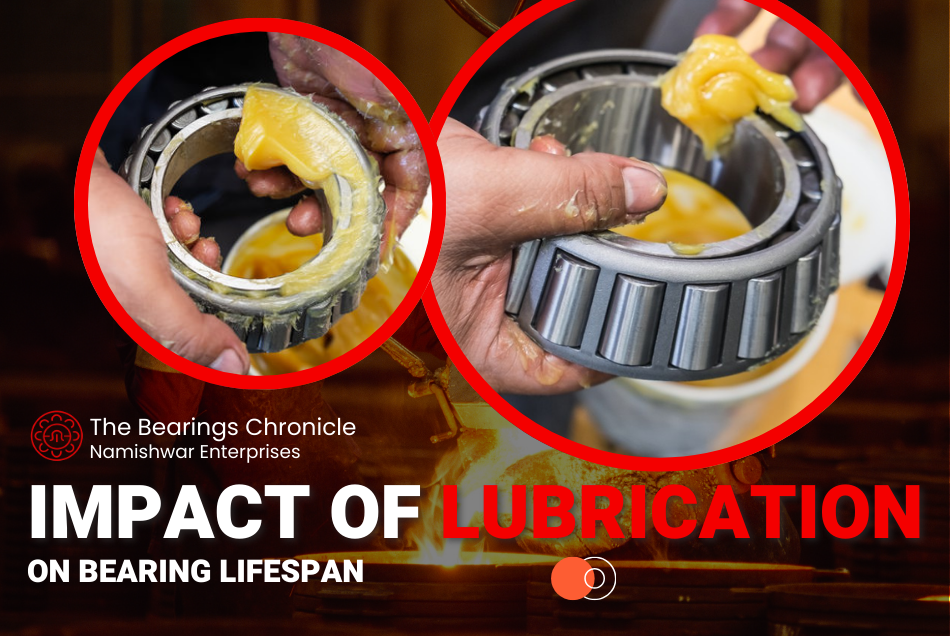Introduction
Ball bearings are fundamental components in countless mechanical systems, enabling smooth motion and reducing friction between moving parts. These seemingly simple devices play a crucial role in the efficiency and longevity of machinery, from everyday household appliances to complex industrial equipment. This article delves into the science behind ball bearing balls, exploring their history, types, materials, and the physics that make them indispensable in modern technology.
What Are Ball Bearing Balls?
Ball bearing balls are small, spherical elements that facilitate motion by reducing friction between two surfaces. They are housed within ball bearings, which consist of an inner ring, an outer ring, and a cage to hold the balls in place. These components work together to support loads and allow rotational movement with minimal resistance.
History of Ball Bearings
Early Developments
The concept of using rolling elements to reduce friction dates back to ancient times. Early examples include wooden rollers used by the Egyptians to move heavy stones. The first documented use of ball bearings appeared in the drawings of Leonardo da Vinci, who sketched designs for a ball bearing mechanism.
Modern Innovations
The industrial revolution sparked significant advancements in ball bearing technology. In the late 19th and early 20th centuries, companies like SKF and Timken developed standardized designs that became the foundation for modern ball bearings. Today, innovations continue to enhance their performance, materials, and applications.
Types of Ball Bearings
Deep Groove Ball Bearings
Deep groove ball bearings are the most common type, characterized by their ability to handle radial and axial loads. They are widely used in various applications due to their versatility and efficiency.
Angular Contact Ball Bearings
Angular contact ball bearings are designed to handle combined loads, both radial and axial. They are typically used in high-speed applications where precision and stability are crucial.
Thrust Ball Bearings
Thrust ball bearings are specialized for axial loads, providing support in applications where there is a need for unidirectional load handling.
Self-aligning Ball Bearings
Self-aligning ball bearings can accommodate misalignment between the shaft and housing, making them ideal for applications where alignment errors are likely.
Materials Used in Ball Bearing Balls
Steel
Steel is the most common material for ball bearing balls due to its strength, durability, and cost-effectiveness. Various grades of steel are used, each tailored to specific applications.
Ceramic
Ceramic ball bearing balls offer several advantages, including higher speed capabilities, lower friction, and increased corrosion resistance. They are commonly used in high-performance and high-temperature environments.
Plastic
Plastic ball bearing balls are lightweight and resistant to corrosion, making them suitable for applications where metal balls would be prone to degradation.
Manufacturing Process of Ball Bearing Balls
Material Selection
The first step in manufacturing ball bearing balls is selecting the appropriate material based on the intended application. Steel, ceramic, and plastic are the primary choices, each offering distinct properties.
Forging
The selected material is heated and formed into rough spherical shapes through a forging process. This step involves compressing the material under high pressure to create the initial shape.
Heat Treatment
The forged balls undergo heat treatment to enhance their hardness and durability. This process involves heating the balls to a specific temperature and then rapidly cooling them.
Grinding
After heat treatment, the balls are ground to achieve precise dimensions and surface finish. This step ensures the balls meet the required tolerances for roundness and smoothness.
Polishing
Finally, the balls are polished to a mirror-like finish, reducing friction and wear during operation. This step is crucial for the performance and longevity of the ball bearings.
The Physics of Ball Bearings
Friction Reduction
The primary function of ball bearings is to reduce friction between moving parts. The spherical shape of the balls minimizes contact area, allowing for smooth motion with minimal resistance.
Load Distribution
Ball bearings distribute loads evenly across the balls, reducing stress on individual components and enhancing the bearing’s overall lifespan.
Rotational Movement
The design of ball bearings allows for precise rotational movement, enabling machinery to operate efficiently and reliably.
How Ball Bearings Work
Ball bearings consist of several key components:
- Inner and Outer Rings: These rings provide the raceways for the balls to roll on, maintaining the alignment and stability of the bearing.
- Cage: The cage holds the balls in place, ensuring they are evenly spaced and reducing the risk of friction between the balls themselves.
- Balls: The balls roll between the inner and outer rings, facilitating smooth motion and reducing friction.
Advantages of Ball Bearings
Reduced Friction
Ball bearings significantly reduce friction, allowing for smoother operation and less wear on components.
Increased Speed
By minimizing resistance, ball bearings enable higher rotational speeds, enhancing the performance of machinery.
Load Capacity
Ball bearings can support substantial loads, both radial and axial, making them suitable for a wide range of applications.
Common Applications of Ball Bearings
Automotive
Ball bearings are essential in automotive applications, from wheel hubs to transmissions, ensuring smooth and reliable performance.
Aerospace
In aerospace, ball bearings are used in critical components such as jet engines and landing gear, where precision and durability are paramount.
Industrial Machinery
Industrial machinery relies on ball bearings for efficient operation, from conveyor belts to electric motors.
Household Appliances
Common household appliances, including washing machines and refrigerators, utilize ball bearings to enhance their functionality and lifespan.
Maintenance of Ball Bearings
Lubrication
Regular lubrication is essential to reduce friction and prevent wear. The type of lubricant and lubrication intervals depend on the application and operating conditions.
Cleaning
Keeping ball bearings clean from contaminants such as dirt and debris is crucial for maintaining their performance. Regular cleaning and inspection help identify potential issues early.
Inspection
Periodic inspection of ball bearings ensures they are functioning correctly and allows for early detection of wear and tear, preventing unexpected failures.
Signs of Ball Bearing Wear and Tear
Noise
Unusual noises, such as grinding or clicking, can indicate worn or damaged ball bearings.
Vibration
Excessive vibration during operation may signal that the ball bearings are no longer functioning optimally.
Temperature Changes
Increased operating temperatures can be a sign of friction and potential failure, necessitating immediate attention.
Replacing Ball Bearings
Tools Required
Replacing ball bearings requires specific tools, including bearing pullers, wrenches, and lubrication equipment.
Step-by-Step Guide
- Preparation: Ensure the machinery is powered off and safe to work on.
- Removal: Use a bearing puller to remove the worn bearing from its housing.
- Cleaning: Clean the housing and shaft to remove any debris or contaminants.
- Installation: Press the new bearing into place, ensuring it is properly aligned.
- Lubrication: Apply the appropriate lubricant to the new bearing.
- Testing: Operate the machinery to ensure the new bearing functions correctly.
Innovations in Ball Bearing Technology
Nanotechnology
Advancements in nanotechnology have led to the development of bearings with enhanced surface coatings, reducing friction and wear.
Lubrication Advances
New lubrication technologies, such as solid lubricants and advanced greases, have improved the performance and lifespan of ball bearings.
New Materials
Research into new materials, including advanced ceramics and composites, continues to push the boundaries of ball bearing capabilities.
Environmental Impact of Ball Bearings
Manufacturing
The manufacturing process of ball bearings involves energy-intensive steps, contributing to their environmental footprint.
Disposal
Improper disposal of ball bearings can lead to environmental contamination. Recycling initiatives aim to mitigate this impact.
Recycling
Many ball bearings are recyclable, and efforts to improve recycling processes are ongoing to reduce their environmental impact.
Challenges in Ball Bearing Design
Load Capacity
Designing ball bearings to handle higher loads without increasing size or weight remains a significant challenge.
Durability
Enhancing the durability of ball bearings, especially in harsh environments, is a continuous focus for researchers and engineers.
Environmental Conditions
Ball bearings must perform reliably in various environmental conditions, from extreme temperatures to corrosive environments.
Future Trends in Ball Bearing Technology
Smart Bearings
The integration of sensors and smart technology into ball bearings allows for real-time monitoring of performance and early detection of issues.
Eco-friendly Materials
The development of eco-friendly materials aims to reduce the environmental impact of ball bearings throughout their lifecycle.
Enhanced Durability
Ongoing research seeks to create ball bearings with superior durability, extending their lifespan and reducing maintenance requirements.
Use-cases of Ball Bearings in Action
Automotive Innovations
Innovations in ball bearing technology have led to more efficient and reliable automotive components, enhancing vehicle performance.
Aerospace Performance
In aerospace, advanced ball bearings contribute to the safety and efficiency of aircraft, enabling longer service intervals and reduced maintenance costs.
Industrial Machinery Efficiency
Industrial machinery benefits from high-performance ball bearings, which reduce downtime and increase productivity.
Ball Bearings in Everyday Life
Examples in Household Appliances
From the quiet operation of ceiling fans to the efficiency of washing machines, ball bearings are integral to the functionality of household appliances.
Electronics
In electronics, ball bearings are used in cooling fans and hard drives, ensuring reliable performance and longevity.
Sports Equipment
Sports equipment, such as bicycles and skateboards, relies on ball bearings for smooth and efficient movement.
FAQs About Ball Bearings
How do ball bearings reduce friction?
Ball bearings reduce friction by allowing smooth rolling motion between the balls and the raceways, minimizing contact area and resistance.
What materials are commonly used for ball bearing balls?
Steel, ceramic, and plastic are the primary materials used for ball bearing balls, each offering unique advantages depending on the application.
How often should ball bearings be lubricated?
The lubrication interval for ball bearings depends on the application and operating conditions. Regular maintenance schedules should be followed to ensure optimal performance.
What are the signs that a ball bearing needs replacement?
Signs include unusual noise, excessive vibration, and increased operating temperatures, indicating potential wear or damage.
Can ball bearings be recycled?
Yes, ball bearings are often recyclable. Proper recycling processes can mitigate their environmental impact.
What advancements are being made in ball bearing technology?
Innovations include nanotechnology, advanced lubrication, new materials, and the integration of smart sensors for real-time monitoring.
Conclusion
Ball bearings are vital components in a vast array of applications, from everyday household items to critical industrial machinery. Understanding the science behind these devices highlights their importance in reducing friction, supporting loads, and enabling smooth motion. As technology continues to advance, ball bearings will undoubtedly evolve, offering even greater performance and efficiency. Whether in automotive, aerospace, or daily use, the humble ball bearing remains a cornerstone of mechanical innovation.







